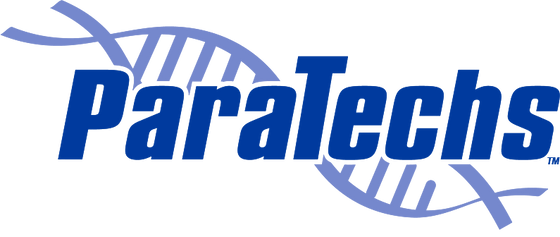rNSET Device for Rats 70010 Resource Page
IMPORTANT! Before beginning the rNSET 70010 device technique, please read carefully the rNSET 70010 Instructions.
• rNSET Device for Rats 70010 Instructions for Non-Surgical Embryo Transfer [PDF]
• rNSET Device for Rats 70010 Publications
• rNSET Device for Rats 70010 Poster [PDF]
The rNSET™ Device 70010 is manufactured in the USA, solely for ParaTechs Corporation, by an FDA Registered Medical Device Manufacturer and ISO 13485:2003 registered company and is EtO (Ethylene Oxide) sterilization processed. Patent Information: Non-Surgical Embryo Transfer Method and Apparatus, United States Patent 9,615,903. [PDF]
International shipments are subject to customs duties and taxes. The Recipient (Importer) of such goods is responsible for paying all related charges. Please read our Goods Customs Duties and Taxes Statement. [PDF]
rNSET Device for Rats 70010 Instructions for Non-Surgical Embryo Transfer
Product Information:
• Catalogue # 70010
• EtO (Ethylene Oxide) Sterilization Processed
• 10 Devices per Box (Devices are individually packaged with 1 speculum in each sealed pouch.)
• Patent Information: Non-Surgical Embryo Transfer Method and Apparatus, United States Patent 9,615,903. [PDF]
Intended Use:
This device is used for ethical transcervical transfer of rat embryos into recipient female rats. For research purposes only. Not intended for human or animal diagnostic or therapeutic uses.
OTHER USES: The rNSET 70010 device can also be used for artificial insemination (AI) or other material/pathogen transfer into recipient female rats. Please contact us for more information, info@paratechs.com.
Handling:
Devices are single use only. Discard after use.
Prior to standard rNSET procedure, suitable embryos at blastocyst stage (e4.5) should be prepared. Female recipients should be prepared who are 3.5dpc pseudopregnant. Please note that this requires the donors to mate 1 day prior to the recipient. For the production of embryos for transfer and pseudopregnant females to serve as recipients, standard transgenic methodologies are used; please use the relevant protocols available fromParaTechs. Studies at ParaTechs resulted in pregnancy rates of 80% for Sprague-Dawley and 90% for F344 rNSET recipients. Birth rates of pups from transfers of 11-20embryos were 39% and 36%, respectively.
Animals:
• Pseudopregnant female rats, 3.5dpc (ParaTechs suggests at least 8 weeks old)
If needed, please reference the ParaTechs protocol “Preparation of Pseudopregnant Female Rat Recipients for Non-Surgical Embryo Transfer” for details.
Embryos:
• Blastocysts, e4.5
If needed, please reference ParaTechs’ “Protocol for Rat Embryo Donor Preparation and Blastocyst Collection for Non-Surgical Embryo Transfer” for details.
Equipment:
• rNSET device with specula (ParaTechs Cat #70010)
• P-2 Rainin/Gilson (or similar) pipette
• Incubator, 37˚C
• Stereomicroscope with transmitted and reflected illumination source with 20x and 40x magnification
• 60 mm tissue culture dishes
• Embryo handling pipette assembly
• 1 ml syringes (Becton Dickinson Ref 309659 or similar)
• 26G needles (1/2“, Exel Cat # 26402 or similar)
• Laboratory Animal Anesthesia System (optional)
Reagents:
• M2 media (Millipore Cat # MR-015-D) equilibrated to 37˚C
• Oxoject (Henry Schein #034974)
• Isoflurane (Isothesia, Henry Schein,Cat #029405) (optional)
rNSET 70010 Procedure (Steps 1 through 10):
1. Inject 3.5dpc pseudopregnant rats with2IU oxytocin (Oxoject, Henry Schein #034974) IP while under isoflurane. Anesthesia is optional, depending on your IACUC protocol. Oxytocin will dilate the cervix so that the rNSET can pass through to deposit embryos into the uterine horn. At ParaTechs, the rNSET procedure is performed at 2 hours post injection to optimize cervical dilation. Not all recipients will dilate appropriately so it is recommended to prepare extra recipients.
2. Just prior to the rNSET procedure, place a 70μl drop of M2 (Embryomax M2, Millipore #MR-015-D) for each rat transfer scheduled in a 60mm tissue culture dish (Corning 353004 or similar.) Do not cover with oil.
3. Load 11-20 blastocysts into the media drop using a standard embryo handling pipet. Keep embryos at 37˚C. Do not incubate in CO2 incubator as M2 is buffered for bench-top applications.
4. Place the rNSET device onto a P2 Pipetman that has been set to 1.8μl.
5. Load embryos into the rNSET device. Group embryos in the drop for ease of loading into the rNSET. Press P2plunger to first stop, lower tip into media and slowly pull embryos into the tip of the rNSET device.
6. Carefully set the P2 to 2.0µl to create a small air bubble at the tip of the rNSET (this helps keeps embryos in place). Gently place P2 with embryos on its side on the bench top near the rat. Avoid jostling the rNSET or touching any surface to the tip of the catheter.
7. Hold the rat still for the procedure. This is best done by holding the base of the tail using the thumb and forefinger of your non-dominant hand while gently positioning the animal on the bench top between your arm and your side. Angle the tail upward. This is the same holding technique used atParaTechs for copulation plug checks. Alternatively, the animal can be held in place with a decapicone (Braintree Scientific #DC 200).
8. Place speculum into vagina. For ease of use, the speculum can be pre-moistened with sterile water or saline. The excess liquid is removed by gently shaking the speculum prior to insertion.
9. Carefully pick up the P2 pipette and insert the embryo-loaded rNSET tip through the speculum, past the cervix, and into the uterine horn. Once the rNSET hub contacts the speculum, expel embryos by pressing the plunger to the first stop only. When the catheter passes through the cervix, the rNSET will easily slide into place. Do not introduce excess air. Do not release the plunger prior to rNSET removal from the uterine horn. This procedure may require multiple attempts to find the cervix. Each attempt should be performed gently, taking care not to bend the tip. This can be done repeatedly without embryo loss as long as the animal is held still and the catheter is not bent or flicked.
10. After embryo delivery, wait 5 seconds and slowly remove the rNSET and speculum. The speculum can be removed with forceps if desired. Return the rat to its cage. The animal can be returned to the vivarium immediately as no recovery or post-procedure monitoring is required.
PARATECHS CORPORATION LIMITED WARRANTY
ParaTechs warrants that, at the time of shipment, the Product will conform to the specifications that accompany the Product. This warranty limits ParaTechs’ liability to replacement of the Product. PARATECHS MAKES NO OTHER WARRANTIES, EXPRESSED OR IMPLIED, WITH RESPECT TO THE PRODUCT; INCLUDING ANY WARRANTIES OF MERCHANTABILITY OR FITNESS FOR ANY PARTICULAR PURPOSE OR THAT THE PRODUCT DOES NOT INFRINGE ANY PROPRIETARY RIGHTS OF ANY THIRD PARTY.
rNSET Device for Rats 70010 Publications
rNSET 70010 Publications:
• A Nonsurgical Embryo Transfer Technique for Fresh and Cultured Blastocysts inRats; J Am Assoc Lab Anim Sci 2020 Sep 1;59(5):488-495. doi:10.30802/AALAS-JAALAS-19-000163. Epub 2020 Aug 12. [PDF]
• Media optimization to promote rat embryonic development to the blastocyst stage in vitro; https://doi.org/10.1016/j.theriogenology.2020.03.007. [PDF]
rNSET Device for Rats 70010 Poster
rNSET 70010 Poster:
• Non-Surgical Embryo Transfer in Rats; A 3Rs Refinement for Assisted Reproductive Technology. [PDF]


